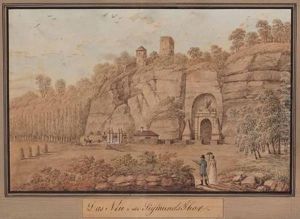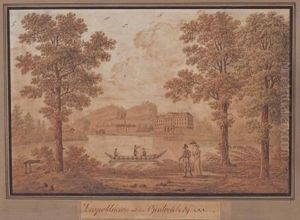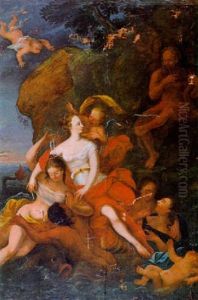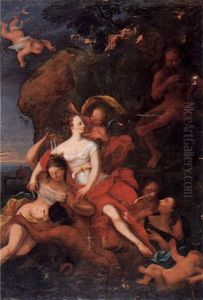Franz Caucig Paintings
Franz Caucig, also known as Franz Caucig or Franz Kavčič, was a prominent Neoclassical painter, born on December 4, 1755, in Gorizia, then part of the Habsburg Monarchy (now in Italy). He was of Slovenian descent and his work is also significant in the cultural history of Slovenia. Caucig's artistic journey began under the guidance of his father, who was a painter himself. His early promise in the arts led him to further his education at the Vienna Academy of Fine Arts, where he had the opportunity to study under the guidance of renowned artists such as Martin Johann Schmidt and Jacob Schmutzer.
In the late 1770s, Caucig moved to Rome, which was a center for artistic study and expression during that period, particularly for those interested in the Neoclassical style. There, he became a member of the Accademia di San Luca, a prestigious academy of artists. During his time in Rome, he was influenced by the works of classical antiquity and the Renaissance, as well as by contemporary artists such as Anton Raphael Mengs and Jacques-Louis David. These influences can be seen in his clear lines, balanced compositions, and the emphasis on drawing and form over color.
Caucig's works often reflected themes of classical antiquity and were characterized by their historical and allegorical subject matter. One of his most notable works is a series of 23 paintings depicting scenes from the history of the Illyrian Provinces, which were commissioned by the French administration under Napoleon. These pieces are considered some of his greatest achievements and stand as a testament to his ability to encapsulate historical narratives within his art.
After spending a significant amount of time in Italy, Caucig returned to Vienna, where he became a professor at the Academy of Fine Arts in 1787. He played a crucial role in the development of the academy's curriculum and was influential in shaping the next generation of artists. Throughout his career, he remained an advocate for the Neoclassical style and continued to produce works that adhered to its principles.
Franz Caucig died on November 18, 1828, in Vienna. His contributions to the arts have been recognized and celebrated not only in Austria but also in Slovenia, where he is considered one of the key figures of Slovenian cultural heritage. His works are housed in numerous collections across Europe and continue to be studied and admired for their historical significance and artistic merit.





